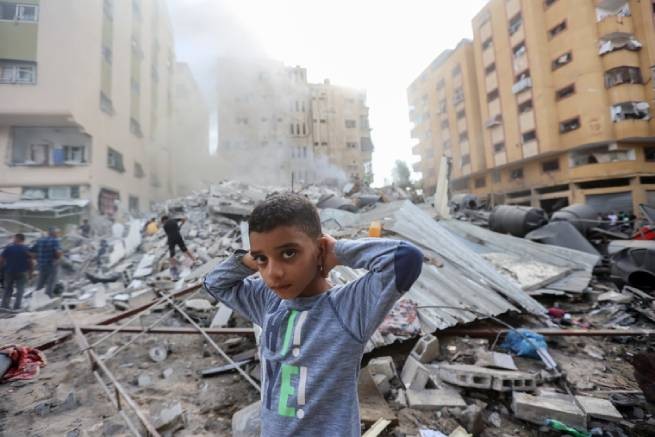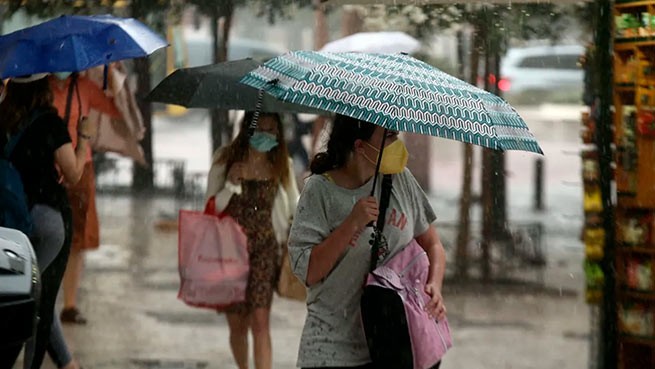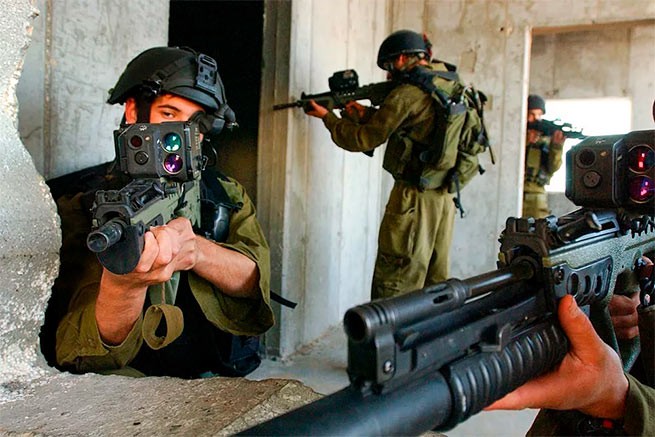USA suspended ground operations Israel in Gaza, thereby preventing a bloodbath.
America and European countries are pressuring Israel to delay a ground invasion of Gaza to buy time for secret talks to free the hostages, people familiar with the matter told Bloomberg. Negotiations with Hamas, introduced by the US and EU on the list of terrorist organizations, are of a sensitive nature and may fail, the same sources noted. However, they added that there is reason to believe that Hamas can release some of the civilians captured by its militants on October 7, without demanding in return the release of prisoners from Israel. Despite initial opposition to the prospect of delaying intervention in Gaza, Israel, under US pressure, agreed to wait, the sources said.
Hamas frees American hostages
Late on Friday evening (10/20), Abu Ubaydah, a spokesman for the armed wing of the Ezzedine al-Qassam Brigades, announced that an American woman and her daughter abducted by Hamas had been released “for humanitarian reasons.” Hamas responded to Qatar’s efforts to free the hostages, he added.
Abu Ubaidah said that this step is intended “to prove to the American people and the world that the claims of Biden and his fascist government are false and baseless.” Israeli officials have confirmed that two American hostages will be released by Hamas, Axios’ Barak Ravid reports.
BREAKING: Two American hostages are going to be released by Hamas, two Israeli officials confirm
— Barak Ravid (@BarakRavid) October 20, 2023
According to the Israeli official, the release was a unilateral move by Hamas and was not made as part of the agreement.
BREAKING Hamas spokesperson on Telegram says “Al-Qassam Brigades released two American citizens (a mother and her daughter) for humanitarian reasons”.
No confirmation from Israel yet.
— Michael Shuval 🏳️🌈 (@MichaelShuval) October 20, 2023
The Red Cross confirmed it had received two hostages.
Why is it difficult to fight in the city?
At the same time, citing expert assessments, the Financial Times compares the current situation in which the Israelis find themselves with the battle to recapture the Iraqi city of Mosul from “Islamic State” in 2016. Reminiscent of that battle, Western experts have expressed great fears about what could happen if Israeli troops launch a ground offensive against Hamas militants in Gaza. But why would Israelis benefit from learning from Mosul? Are the characteristics of these two events comparable?
On this day in 2017, major combat operations against ISIS were completed in the city of Raqqah, Syria.
Raqqah, like Mosul in Iraq, was a self declared capital city for ISIS. Iraqi and SDF forces faced an incredibly tough fight in their respective battles.
I'm happy to have been… pic.twitter.com/KL6PFHtLCO
— Havoc Six (@Havoc_Six) October 18, 2023
What happened in Mosul
The battle for Mosul, which is similar in size to urban areas of Gaza and had a comparable population of about 2 million when the city fell to the Islamic State, began on October 16, 2016.
At that time, about 8,000 Islamic State militants were hiding in the city, while in Gaza their number is much larger: from 30 to 40 thousand Hamas fighters are waiting on the approaches and another 15 thousand fighters of the Palestinian Islamic Jihad are in service, reports a British newspaper.
A US-led force of 100,000 Iraqis was deployed against the militants in Mosul, compared with more than 160,000 regular Israeli troops and another 360,000 reservists against Gaza. International coalition aircraft operated over Mosul, providing reconnaissance and conducting airstrikes – a similar mission carried out by Israeli fighter jets that carried out hundreds of strikes on Hamas targets.
There may have been rapid progress at first, but it soon slowed as the attackers encountered stiff resistance. The Pentagon has adjusted its rules for the use of air power, allowing airstrikes to be carried out with fewer errors.
But Islamic State militants then began rounding up civilians in government buildings to use as human shields, sometimes moving them through tunnels from one fighting position to another.
In addition, dilapidated buildings surrounded by rubble provided the jihadists with what one American commander described as bunkers ideally suited to withstand bombs. Speaking to the Financial Times, a special forces officer said that “there are thousands of hideouts in cities. If you want to eliminate the enemy, you have to clear the area house by house. But that exposes you to 360 degrees of danger. You just can’t control it.”
As a result, the coalition “shed blood” for the sake of Mosul, losing 8,000 troops and spending nine months on it instead of the three they expected.

In Gaza, things are much worse.
According to research by the Rand Corporation, a Washington think tank with ties to the US military, the Israelis have developed a number of plans. Classified as small, medium and large, these plans were developed before the Israeli army’s last ground incursion into Gaza in 2014.
A limited-scale offensive would see the Israelis controlling northern Gaza without entering populated areas, which is similar to the current situation… The middle plan called for a larger ground invasion of the northern and southern areas, and the most ambitious plan called for the capture of all of Gaza.
Even greater difficulties
However, despite such careful planning, the chances of a quick Israeli operation in Gaza are slim, writes the Financial Times. “Hamas knows Gaza much better than [Исламское государство] knows Mosul”says American general and former Iraqi commander David Petraeus. “Moreover, it took us nine months [на взятие Мосула]and Israel does not have such time”. They know that international opinion will change “as the damage piles up and innocent civilians die.”
Moreover, at “Islamic State” had only two years to prepare its defense in Mosul, while Hamas had plenty of time to prepare in Gaza, says John Spencer, a retired US general.
Adding to the complexities of Gaza’s terrain is the huge network of tunnels built by Hamas. Gaza City also has about 60 buildings six stories or more tall, while Mosul has almost none, according to Michael Knights of the Washington Institute for Near East Policy.
“The Israel Defense Forces may still surprise us, says former British armored battalion commander Ben Barry. – In the end, everything is relative: if the defenders are seriously motivated and well equipped with weapons capable of creating a sufficient density of effective fire to stop the attackers, then they will be able to hold out. If not, that’s a different matter.” What is clear is that the collateral damage will be enormous.
Even 10 million won’t cope
Among the challenges facing the IDF in Gaza are likely to include houses rigged to explode, militants in civilian clothes, military installations hidden under schools and other civilian structures, and weapons stored in Gaza, military officials and analysts say. in mosques. In addition, Hamas has deeply penetrated Palestinian society.
“Urban warfare is just one problem after another”says one Western commando who accompanied Iraqi troops fighting in Mosul six years ago. “There is also no limit to the demands of the troops, he added. – Even if Israel sends a 10 million army to Gaza, it will take a long time. And this is only the occupation of territory. Keeping her is another matter.”
Dramatic score
But if the battle for Mosul is the driver, the final outcome for Gaza could be 10,000 civilian deaths, 1 million people forced from their homes, more than 40,000 buildings destroyed or demolished, 10 million tons of garbage in the streets and $50 billion in restoration of the city, removal of unexploded ordnance and planted explosive devices.
At least Mosul had a government that would later govern the city, unlike Gaza, if Hamas, which rules the enclave, was completely removed. Israeli troops, who left Gaza in 2005, are not eager to reoccupy the territory, and Petraeus said it was unlikely that any Arab forces would be willing to do so.
“I can’t think of a more complex context” said Petraeus, who has just published a book with a history of every major conflict since 1945. “The problems are as great as anything mentioned in this book.”







More Stories
Israel launched a missile attack on a facility in Iran, what is known at this hour
Collective West to Israel: “Repelling Iranian attacks is too expensive for us”
Iran attack on Israel